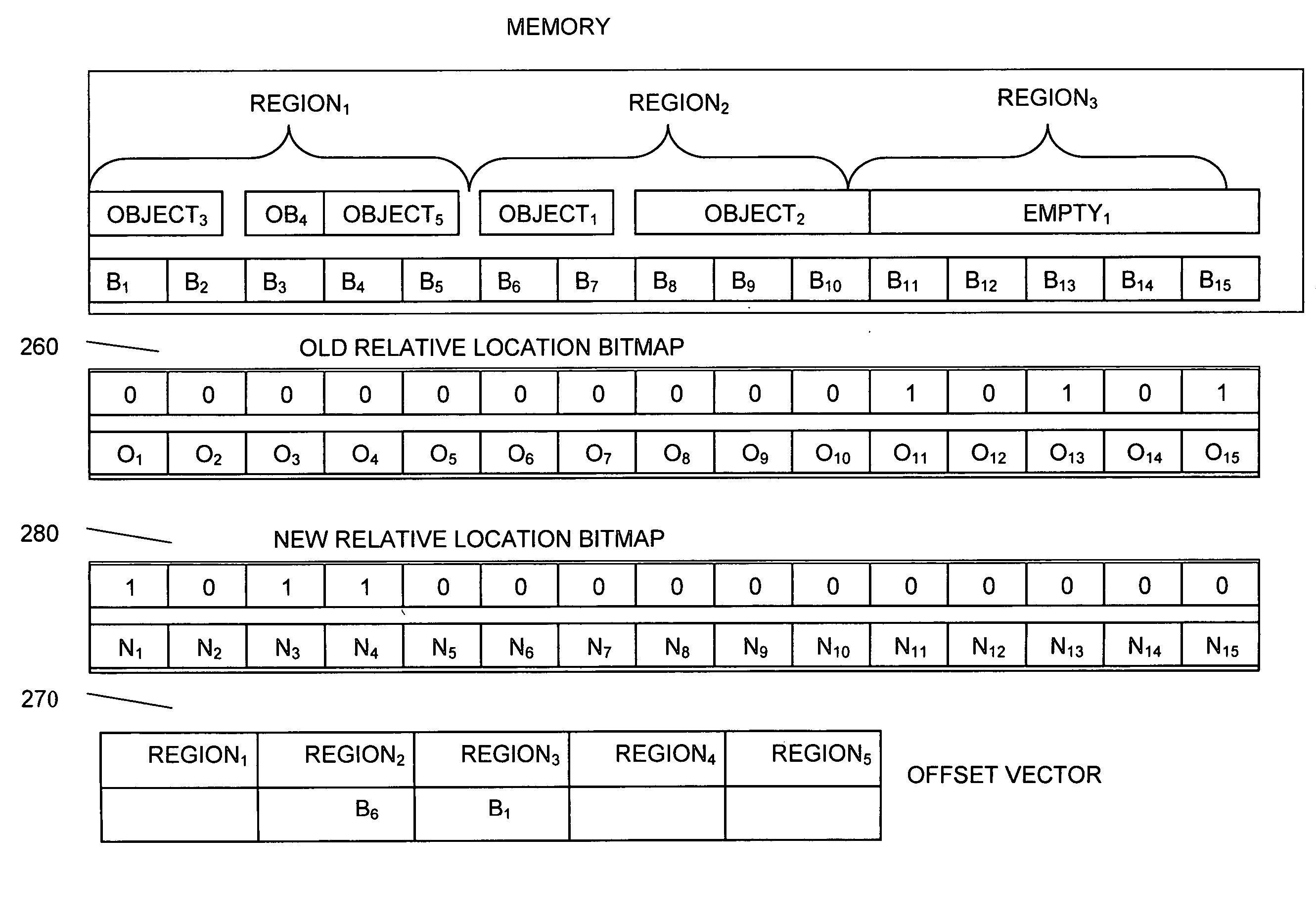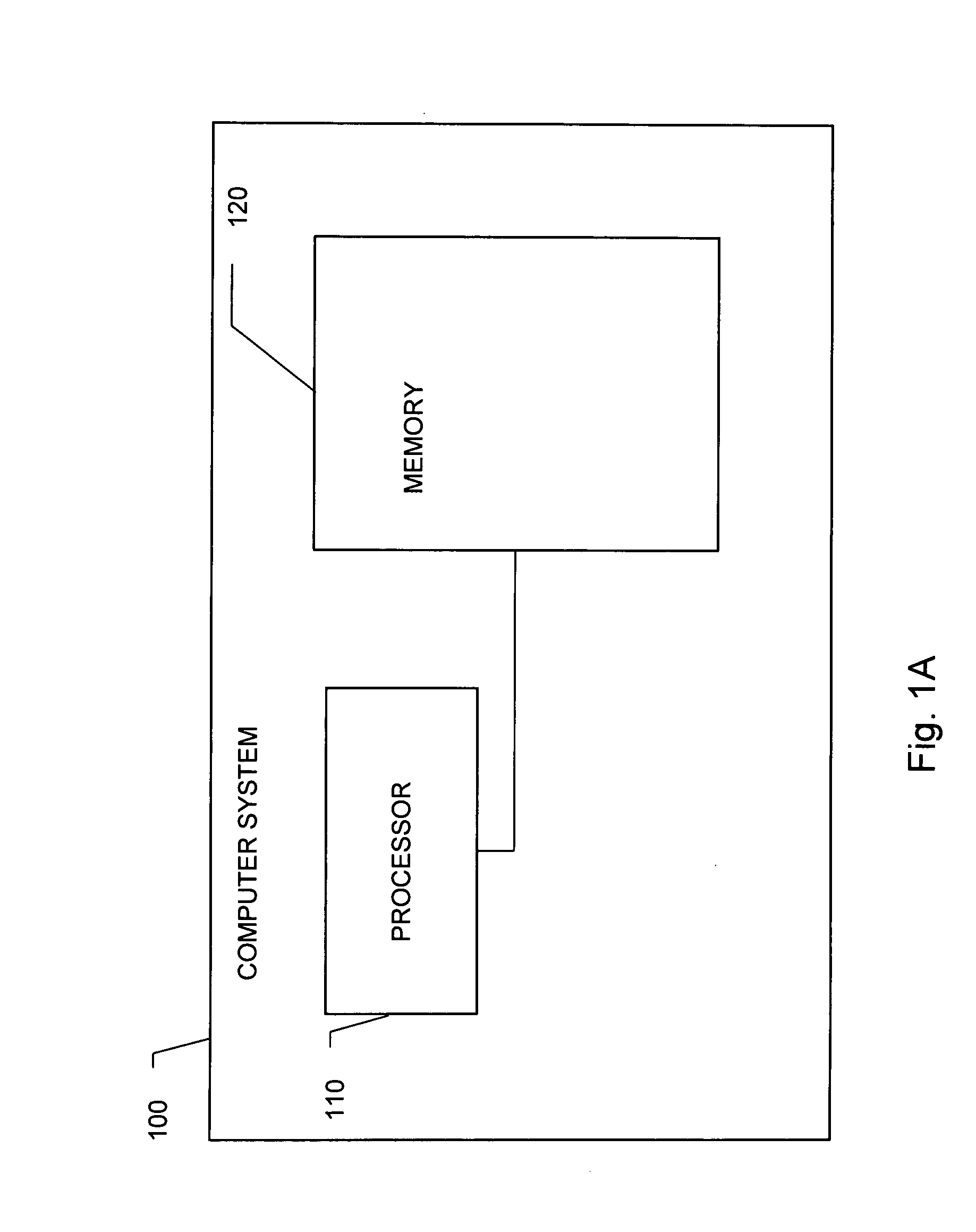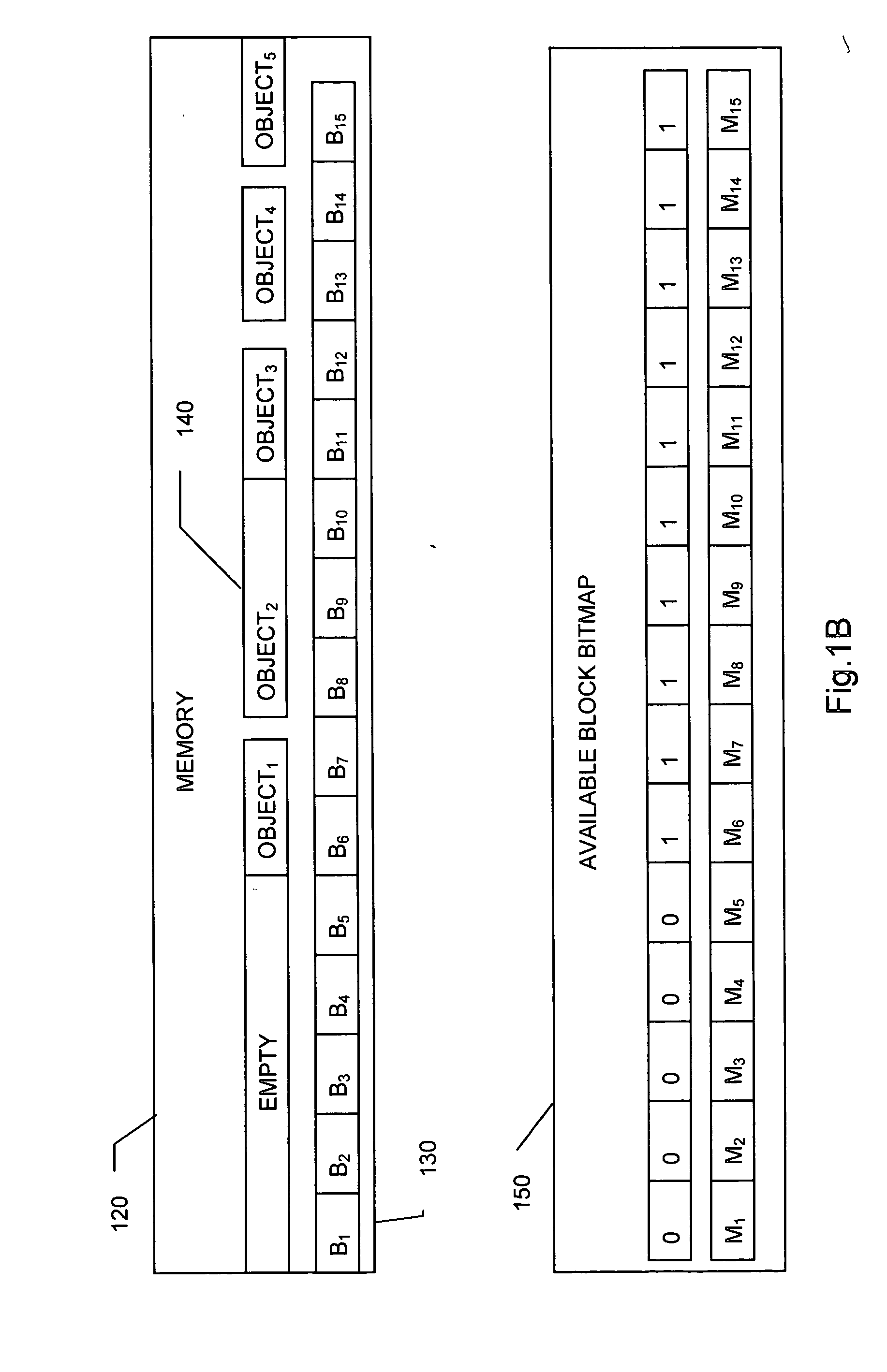Relative positioning and access of memory objects
a memory object and relative positioning technology, applied in the field of object relocation and reference fixup, can solve the problems of memory fragmentation of garbage collectors from the mark-sweep family, large amount of auxiliary data structures, and relatively small holes
- Summary
- Abstract
- Description
- Claims
- Application Information
AI Technical Summary
Benefits of technology
Problems solved by technology
Method used
Image
Examples
Embodiment Construction
[0055] Reference is now made to FIG. 1A, which is a simplified block diagram of a computer system, and additionally to FIG. 1B, which is a simplified pictorial representation of memory storage, both useful in understanding the present invention. A typical Computer System 100 includes a Processor 110 and a Memory 120, such as Heap Memory. Processor 110 typically processes data and stores data objects in Memory 120 for later retrieval.
[0056] Memory 120 typically includes one or more contiguous Blocks 130 of memory, each block denoted as Bn. Each Block 130 is typically of a fixed size of n bytes, and may be used to store an Object 140 or part thereof. Preferably, the start of each Object 140 is aligned with the start of a Block 130.
[0057] Computer System 100 may utilize an Available Block Bitmap 150 to help identify blocks in Memory 120 in which objects are stored. Available Block Bitmap 150 is typically composed of a memory bit vector where the first bit M1 in Available Block Bitmap...
PUM
 Login to View More
Login to View More Abstract
Description
Claims
Application Information
 Login to View More
Login to View More - R&D
- Intellectual Property
- Life Sciences
- Materials
- Tech Scout
- Unparalleled Data Quality
- Higher Quality Content
- 60% Fewer Hallucinations
Browse by: Latest US Patents, China's latest patents, Technical Efficacy Thesaurus, Application Domain, Technology Topic, Popular Technical Reports.
© 2025 PatSnap. All rights reserved.Legal|Privacy policy|Modern Slavery Act Transparency Statement|Sitemap|About US| Contact US: help@patsnap.com



